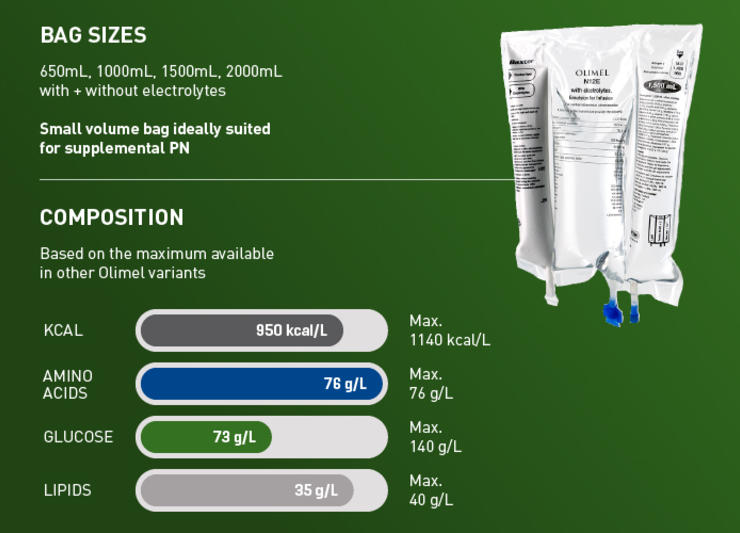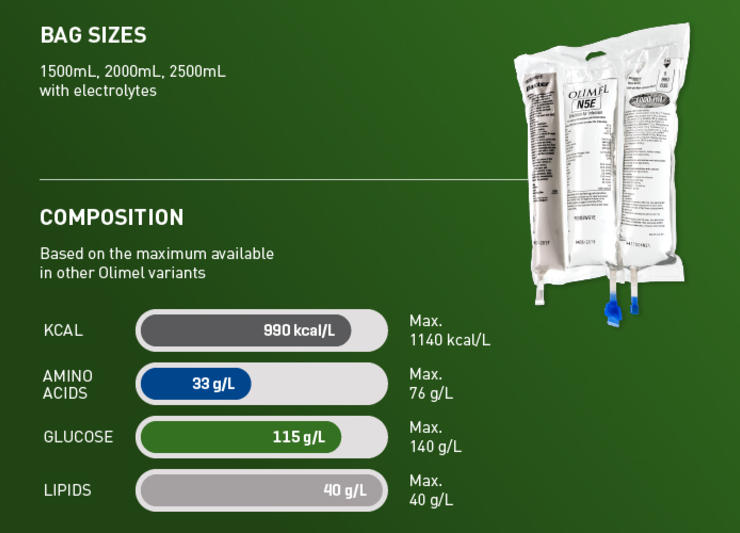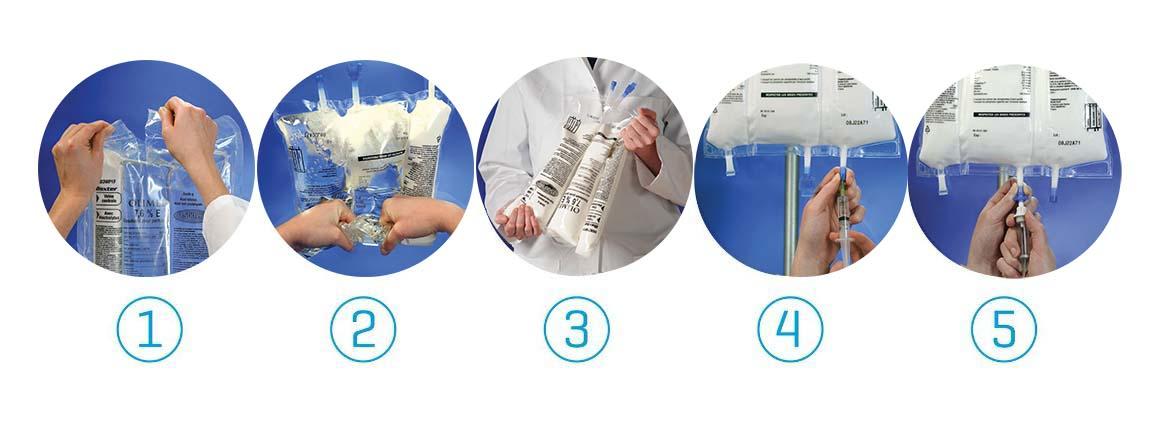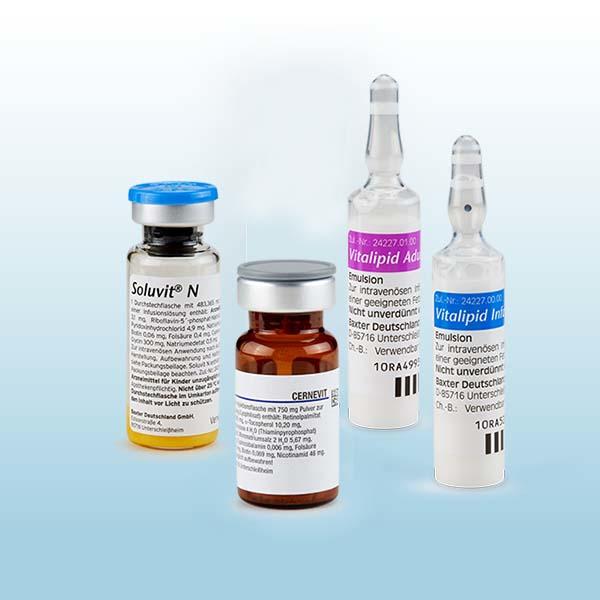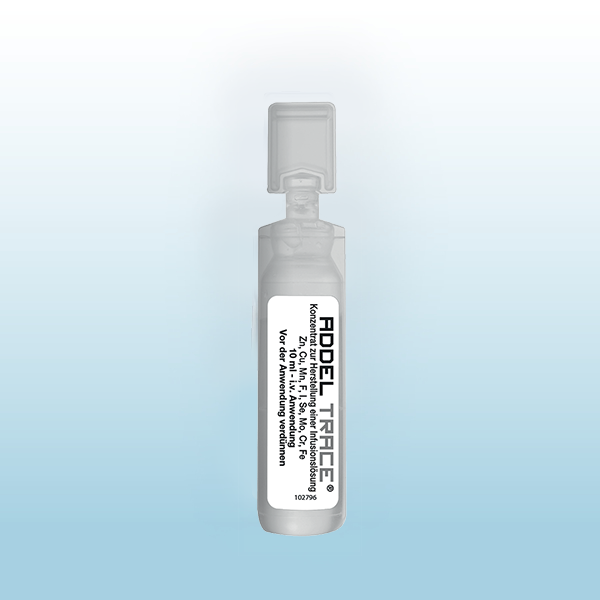Olimel
The Olimel portfolio gives you the broadest selection of three-chamber bags with an olive oil-based lipid to meet the unique nutrition needs of each patient.
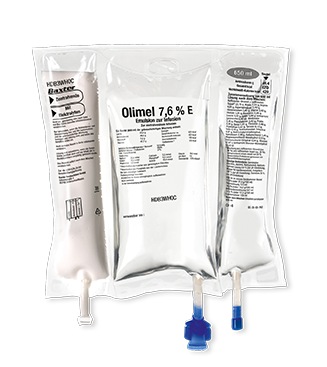
Not all cancer and critically ill patients are the same, and neither are their nutritional requirements. The Olimel portfolio offers a range of central and peripheral formulations to match the individual protein and energy needs of your patients.1-3 Olimel N12 combines a high protein formulation with low glucose content, resulting in the lowest energy to protein ratio currently available in a standardized, three-chamber bag (3CB).2,3,18-23 Olimel contains olive oil, which is rich in long-chain Omega-9 monounsaturated fatty acids (MUFAs), with fewer polyunsaturated fatty acids (PUFAs) than soybean and fish oil.26 An olive oil-based lipid emulsion may preserve immune function and has been associated with fewer infections than soybean oil.4,10-12
See full prescribing information for Olimel N12 SmPC
See full prescribing information for Olimel N12E SmPC
See full prescribing information for PeriOlimel N4 & Olimel N5, N7, N9 SmPC
Olimel - meeting the unique nutritional needs of each patient

Preserve immune function
Olimel contains an olive oil-based lipid emulsion, which is associated with fewer infections and may preserve immune function.4,10-12
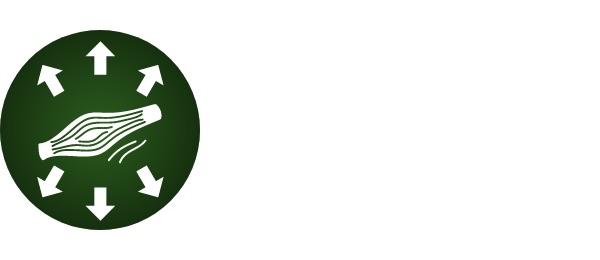
Reach protein targets with less fluid
Olimel N12 combines a high protein formulation with low glucose content, resulting in the lowest energy to protein ratio currently available in a standardized 3CB.2,3,18-23

Personalize without compromise
Broadest selection of 3CBs to meet the unique nutrition needs of each patient.1-3

Reduce risk of hyperglycemia
Hyperglycemia is associated with an increased risk of infections.15-19 With only 73 g/L, Olimel N12 has one of the lowest glucose levels available in a 3CB.2,3,18-23


